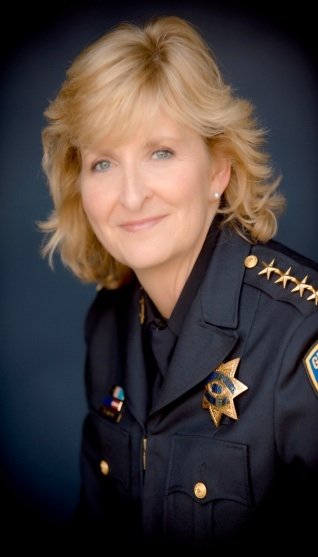In August 2010, Gilroy Police Chief Denise Turner detailed a burgeoning issue for Gilroy when she presented her original status report on the city’s homeless population.
In the intervening three years, increasing numbers of Santa Clara’s disadvantaged population have sought help from the many community outreach programs located throughout the Garlic Capital, exhausting resources from federal, state and county budgets, according to Turner.
In the upcoming regular City Council meeting on June 17, the chief will present an updated version of the homeless report that reflects how resources are being stretched citywide. She wants the Council to not only receive it, but to take action on it.
“What is the policy direction going to be?” Turner queried.
Whichever stance the City takes – will Gilroy become a benevolent service center hub for the homeless or will it roll up the welcome mat and direct people to San Jose or Monterey – GPD wants to free up countless man hours and funds spent tackling transient issues.
In 2009, Gilroy police responded to roughly 700 calls directly related to homeless problems at an estimated cost to taxpayers of $240,000. Nowadays, Turner says GPD is responding to between “five to eight” calls a day and is “monopolized” by problems surrounding the city’s impermanent population.
One idea Turner will bring to Council is the creation of a temporary “legal camping area” that could, in theory, accommodate most of Gilroy’s homeless and transients in one place. She previously gave an example of a similar facility in Washington state, which utilizes land owned by churches and moves location every three months.
“It was somewhat successful and didn’t have a big impact on personal safety,” Turner noted.
Whether the compassion already shown by Gilroyans extends as far as creating legal encampments remains to be seen, but Councilman Peter Leroe-Muñoz is impressed that GPD is offering solutions not seen before in Gilroy.
“I appreciate that law enforcement are brainstorming ideas that are outside the box,” he said.
Innovative problem solving aside, Leroe-Muñoz sees a host of challenges on the horizon in getting an encampment off the ground – but he’s more than willing to look at any viable option.
“There’s the question of making sure it would be safe for both local residents and transients,” Leroe-Muñoz reasoned. “I can also see health, heat and plumbing issues.”
Still, he thinks that if any city can figure out a creative way around a sensitive problem, it’s Gilroy.
“It’s a compassionate city,” he asserted. “We have resources and we need to make sure they’re integrated.”
Jan Bernstein-Chargin is one local player at the epicenter of the ongoing battle to weave funds, services and volunteers together to create a local safety net for the disadvantaged. She is a facilitator on Gilroy’s Homeless Task Force, chair of Gilroy’s Housing Advisory Committee and board chair at the Gilroy Compassion Center located near the intersection of Leavesley and Monterey Roads on the north of the city. If anyone understands the issues facing Gilroy, it’s Bernstein-Chargin and she doesn’t want the upcoming dialogue and policy direction decision to turn into a political hot potato.
It’s not a left or right issue, Bernstein-Chargin explained: it just comes down to the best way to get people back on their feet again.
“What are the solutions?” she asked.
In addition to the “legal encampment” idea, Bernstein-Chargin would like the Council to consider a “safe parking” program that enables homeless people to sleep in their cars without running foul of the law.
“People would know where they are allowed to be,” she pointed out.
It is illegal to live in a car in the city – a reality that frequently leads to tickets, court dates and sometimes people disappearing into the in the judicial system, losing their jobs in the process, Bernstein-Chargin elaborated.
Still, she concedes this is only a small part of a much bigger problem.
“The longterm solution is safe and appropriate housing for all income levels,” she noted. “What can you rent when you earn less than $1,000 a month?”
Changing the law to create a “safe parking” program can only happen if Council directs City staff to write a new ordinance, according to Turner.
As the person in charge at the business end of enforcing the city’s wishes, the chief wants to ensure a thorough conversation takes place before any decision.
“It’s such a complex issue,” Turner said. “We have to understand the root causes of the problem.”
Still, it all comes back to one key point, which is “what’s our overall tolerance?” Turner said.













